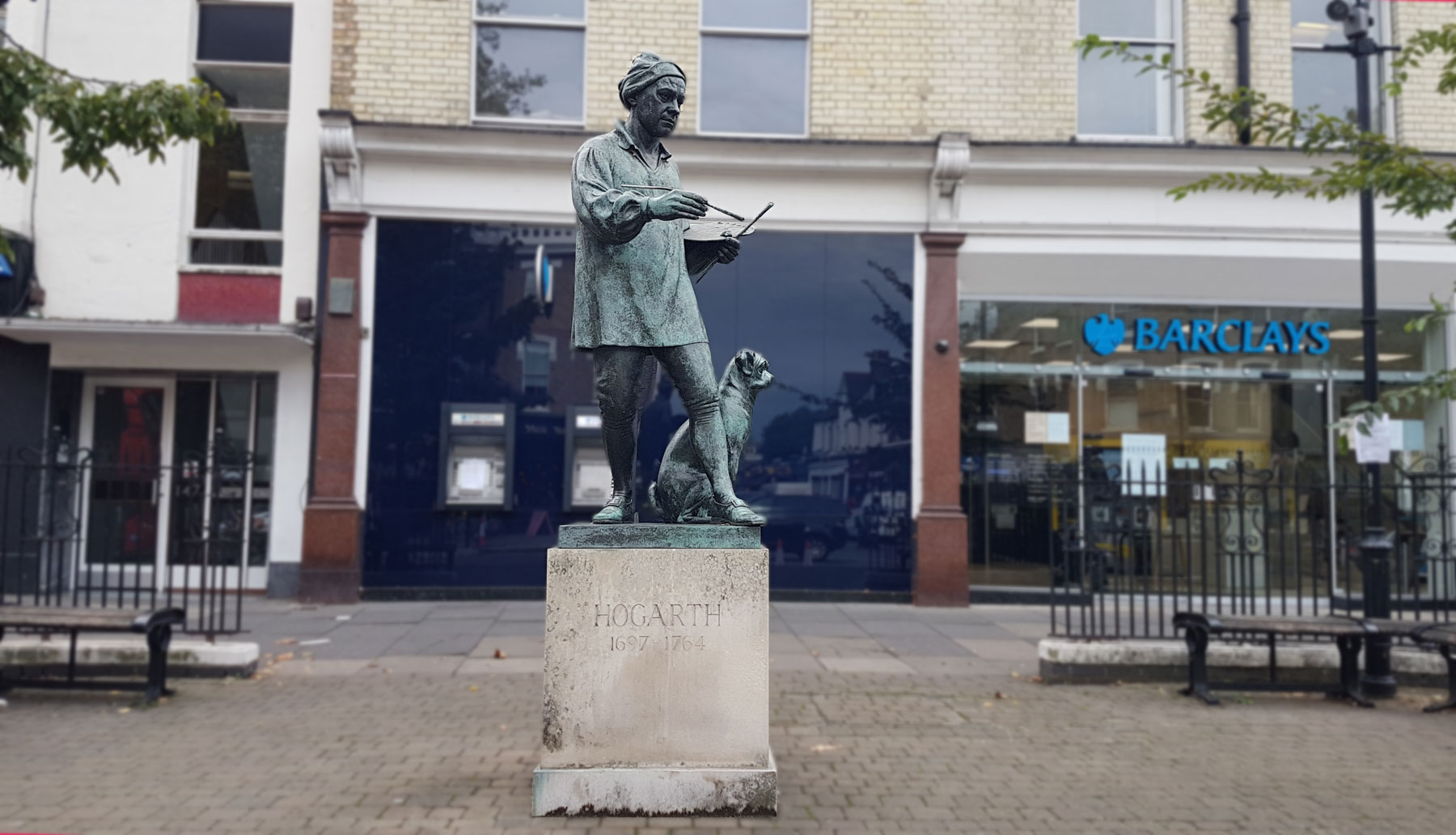Nearly demolished to make space for the M4, Hogarth’s House is an easy to overlook little museum in London.
As the name may suggest, it’s a house once lived in by a person called William Hogarth — and his fame is such that he gave his name to the nearby roundabout and its 1970s “temporary” flyover.
Hogarth is famous for being one of the great satirists of his time, a painter, engraver and illustrator. His works, such as the contrasting Beer Street and Gin Lane, or The Rake’s Progress are legendary, but they are a small part of his long career observing society around him.
In 1749, William Hogarth bought a modest country house in then rural Chiswick, possibly to escape the summer heat in the City, and it remained his country escape until his death in 1764, and in the family until 1808.
It passed through a number of subsequent owners until it was put up for sale in 1901 to be demolished and the site redeveloped. A campaign to save it failed to raise enough money, but then Lieutenant-Colonel Robert William Shipway bought it with the intention to open it as a museum to the man who, for a short while, lived here.
It passed into council ownership in 1909 and is now looked after by Hounslow Council, who open it as a free to visit museum.
The slight issue with the building is that unlike say later Victorian artists, whose houses were turned into museums the moment they died, so many people have lived in Hogarth’s House that it’s not really his house. It has been chopped and changed by various owners, the attention of German bombers in WW2, and a fire in 2009, such that building aside there’s nothing left of the man who holidayed here for 15 short summers in the 1750s.
As such, it’s not a place to visit to see Hogarth’s clothing, Hogarth’s toothbrush, Hogarth’s chamber pot — but more a gallery of Hogarth’s works.
Entry is currently by timed appointment, and you’re given 40 minutes to wander around the house alone, and a bell is run at 35 minutes to remind you that your time is nearly up.
A ground floor room gives an introduction to the man, and includes the very grand original letter of appointment for Hogarth’s position as Serjeant Painter to the King, but it’s upstairs that the gallery starts, with many of his most famous works on display.
The Rake’s Progress, of course, has to be here, with small signs explaining the meaning of each stage in the rich fop’s slow decline to poverty and madness. There’s the contrasting Harlot’s Progress here, showing the similar decline for a young girl lured into prostitution and the horrors that await her.
The four prints on the Four Stages of Cruelty which start with a man’s cruelty to animals, and end up with the man himself being dissected on a table. The six paintings of the Marriage A-la-Mode that commented on public opinions about marriage for money instead of love.
These are the decoration for the house, which is nicely restored, and plenty of small signs explaining how the building was altered over the centuries. A new door here, a bigger window there.
As a co-founder of the Foundling Hospital for orphaned children, there’s a display about his concerns for children, his own and others.
Otherwise, it’s basically, an old building with lots of prints on display.
It’s not a building that’s readily on the tourist trail, but it’s a worthy one to visit, to learn a little bit about one of England’s great satirists and see many of the prints that are rarely talked about elsewhere.
They seem to have a new website with a lot more information about the building, so new that the Hogarth Trust’s website is still pointing to the information-light page on Hounslow Council’s website, which was only updated itself a few months ago.
The new website is a lot more informative and hopefully will make it easier to understand why a visit is a worthwhile 40 minutes of your day.
Visits to Hogarth’s House are free, and (at time of writing), need to be booked in advance. Also at the time of writing, the garden with its ancient Mulbury tree was closed.
If arriving via Turnham Green tube station, do notice the Millennium statue of Hogarth, because the maquette for it is inside Hogarth’s House.












If when you leave the museum you go back to the roundabout take the walkway across to the George & Devonshire pub & walk down Church Street towards the river at the bottom right is the parish Church of St Nicholas Hogarth’s grave is in the Churchyard.A certain Oliver Cromwell also resides inside the church in the Falkenburgh family Vault Minus his Head, This vault is now sealed with Concrete to underpin the sagging riverside foundations it was these works that uncovered the family secret.